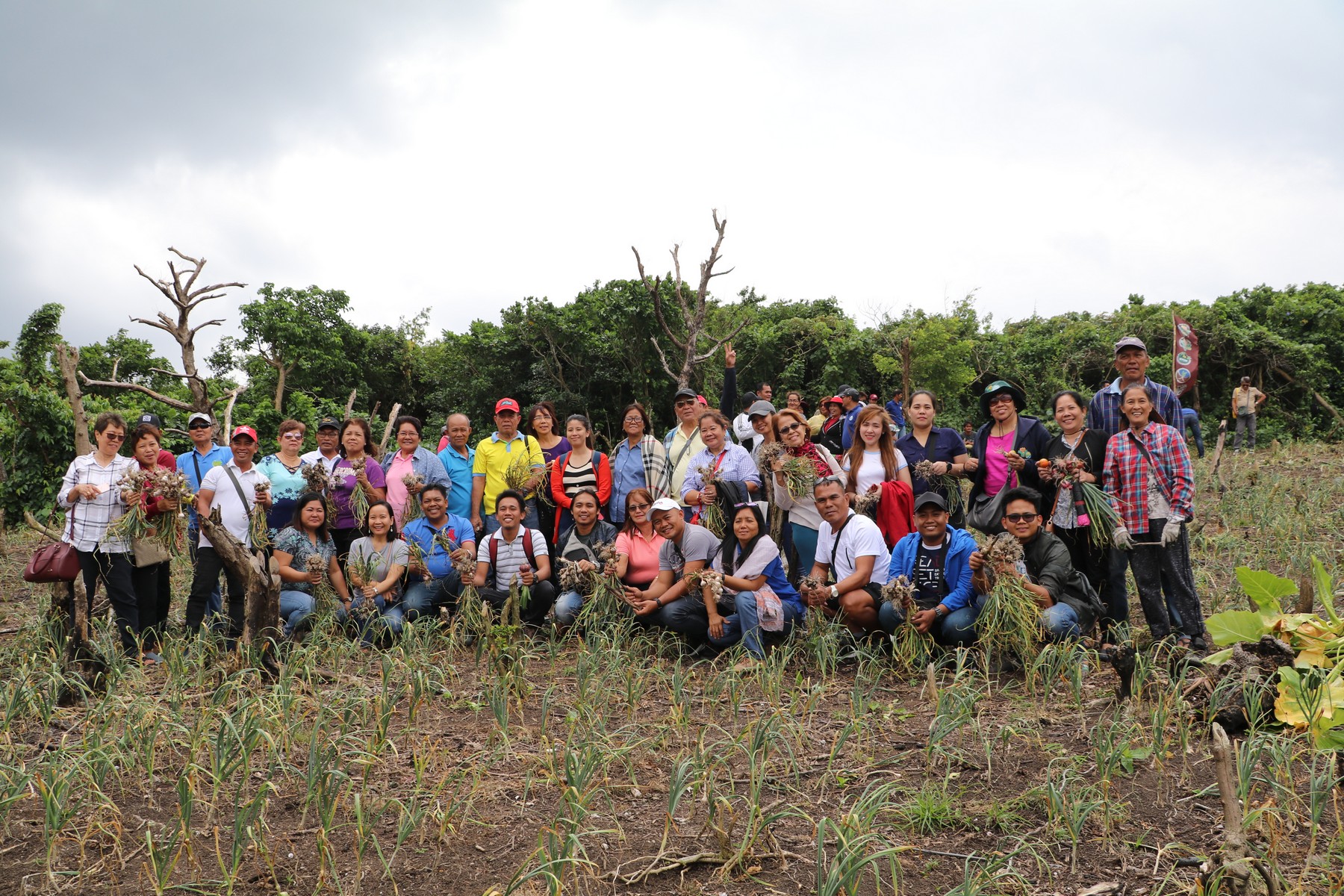Currently, MIMAROPA’s garlic faces problems such as the short shelf-life of the crop and the shrinking of its size during its dormancy period, according to High-Value Crop Development Program (HVCDP) Regional Focal person Ms. Corazon O. Sinnung.
To address this problem, the Department of Agriculture-MIMAROPA (DA-MIMAROPA) HVCDP and Agri-business Marketing and Assistance Division (AMAD) facilitated a benchmarking study in the province of Batanes on March 14-16.
Along with them are the Research Team from the Region, the Agricultural Program Coordinating Officers, the Municipal Agriculturist, Agricultural Extension Workers as well as farmer leaders from Oriental and Occidental Mindoro---two of the major garlic producers of the Region.
Batanes province is known for its good quality, long shelf-life, aromatic and strongest tasting garlic crop. The benchmarking activity was conducted to determine their best farming practices that could help to improve the production and postharvest strategies of the said crop in MIMAROPA.
Divided into groups, the team interviewed the garlic farmers from different municipalities of Batanes about their practices in cultural management, post-harvest and cost of production.
The activity started by visiting the farm of Mr. Julian Nobleza in Brgy. San Antonio in Basco where a garlic harvest festival was held. Agricultural Center Chief III Celso Batallones and Provincial Agriculturist Cesar Hostallera facilitated the team and oriented them with the Batanes Red variety which was grown in the farm. They discussed its characteristics and differences from other varieties found in other provinces. The speakers also emphasized the traditional farming done by the farmers of Batanes.
“We may not be at par with volume of production but we are proud to say that we have an economic advantage for producing safe food for everyone, we do not use synthetic fertilizer in all our crops,” Mr. Batallones said.
He also added that the yearly conduct of the harvest festival for garlic is to recognize the efforts of the farmer and take pride of their export quality root crop.
Batanes is proud of how they maintain to practice organic agriculture despite the presence of different farm inputs. They use animal manure to fertilize the soil and practice a cropping pattern of garlic – legumes – rice.
The said cropping pattern helps to rejuvenate the soil fertility and decreases its acidity through growing legumes while the rice stalks are used in mulching for the planting of garlic.
Batanes has two kinds of garlic variety. These are the Itbayat local that has smaller cloves like the Ilocos variety and the imported variety called Batanes Red that has bigger cloves.
For their post-harvest practice, most of the farmers practice air drying and hanging of garlic above their dirty kitchen. The DA here also maximizes the use of National Food Authority warehouses for storing the crop.
The benchmarking activity was not only to improve the garlic of MIMAROPA by learning from Batanes farmers but it has also become a way for the DA-MIMAROPA to share their innovation.
Mr. Celso Olido, OIC-Chief of Agribusiness and Marketing Assistance Division, shared DA-MIMAROPA’s discovery which is the advantages of using wood vinegar to improve soil quality, eliminates pests and controls plant growth.
He added that it could also be used to smoke the garlic for drying because it will not darken the cloves due to the absence of carbon dioxide.
The team also interviewed farmers and visited garlic farms in the Municipalities of Uyugan and Sabtang for additional information.
Data gathered from the interviews will be analyzed by the HVCDP and AMAD team to identify the practices that could be innovated by the region to solve its current problem in garlic production.


